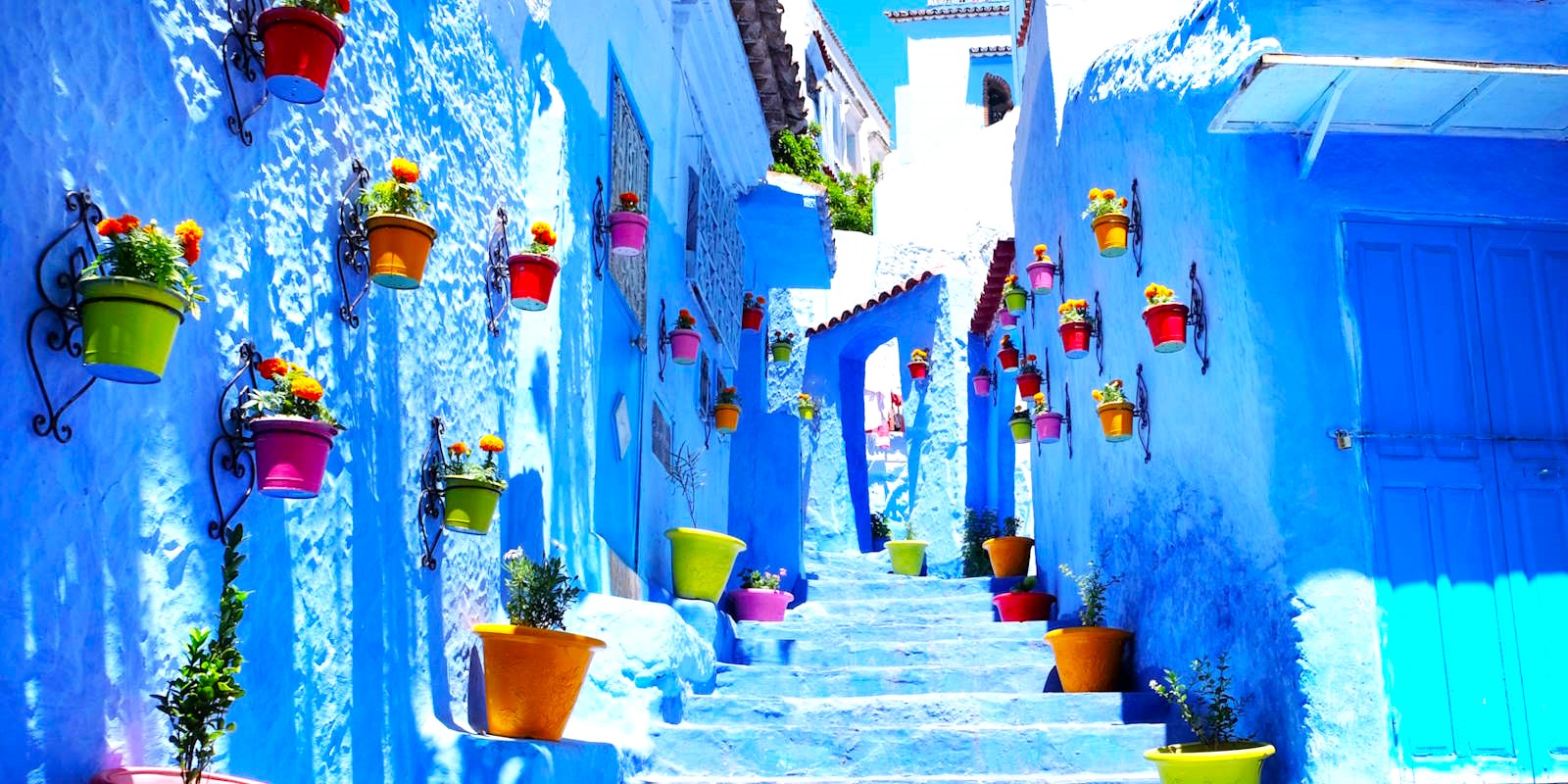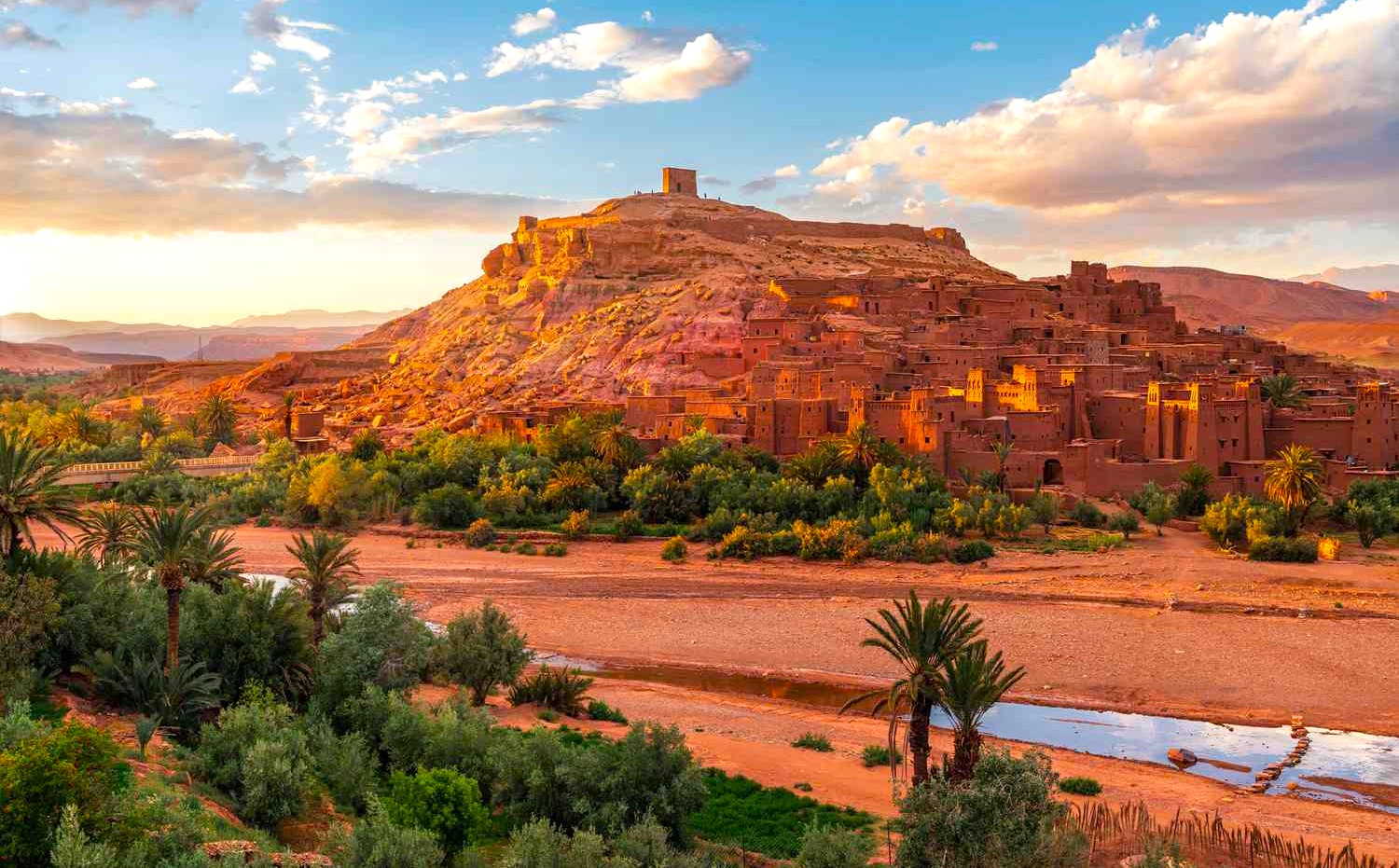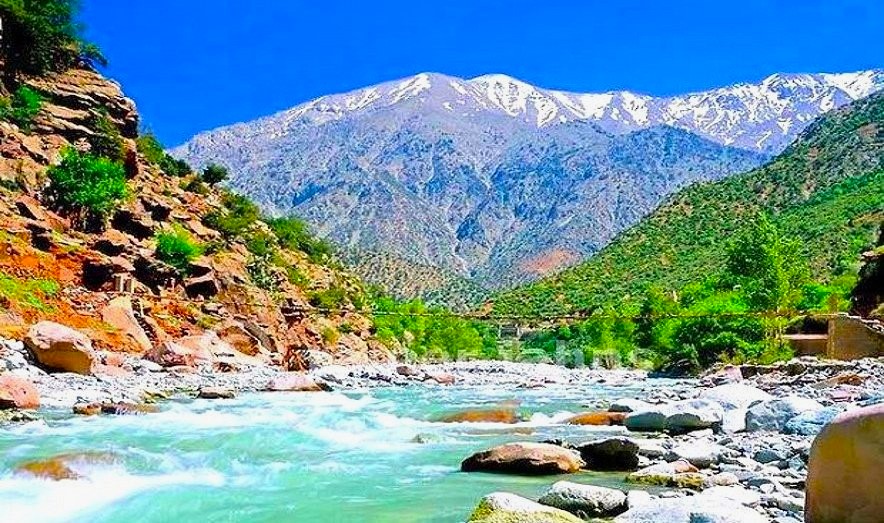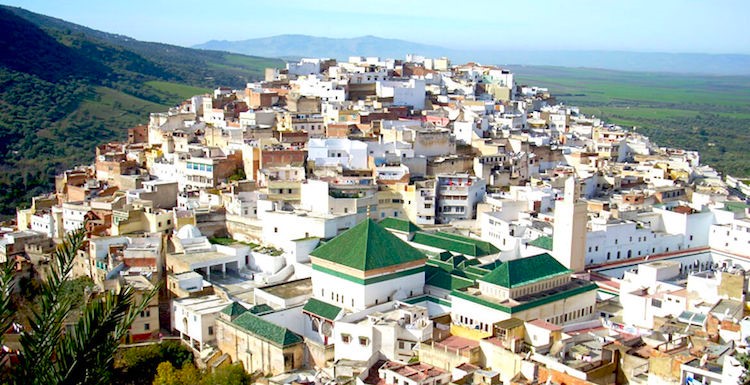Traditional Moroccan Villages You Must Visit in Morocco
Morocco is famous not only for its vibrant cities and landscapes, but also for its traditional Moroccan villages, where time seems to slow down. Scattered across the Atlas Mountains, Rif Mountains, and valleys, these villages offer travelers a glimpse into authentic Moroccan life, far from the bustling medinas and tourist hotspots.
Visiting traditional Moroccan villages allows you to experience centuries-old architecture, local customs, and a close connection to nature. Many villages are built from earth or stone, blending seamlessly with their surroundings. Narrow alleyways, terraced houses, and bustling local markets tell the story of communities that have preserved their heritage for generations.
Whether you are exploring the Berber villages in the Atlas Mountains or charming settlements in the Rif region, discovering traditional Moroccan villages is about more than sightseeing, it is about connecting with a culture that values hospitality, craftsmanship, and the rhythms of daily life.
Why Visiting Moroccan Villages Is a Unique Experience
Visiting traditional Moroccan villages is a unique experience because it allows travelers to step away from the modern pace of life and immerse themselves in centuries-old traditions. The architecture alone is a marvel, with houses made from local stone, clay, and wood, blending harmoniously with the surrounding mountains and valleys. Many villages feature narrow winding streets, terraced homes, and communal spaces that have remained largely unchanged for generations.
Beyond architecture, these villages provide a window into authentic Moroccan culture. You can observe locals weaving carpets, crafting pottery, or tending to terraced fields, offering insight into daily life and age-old customs. The warm hospitality in these villages is another highlight, with families often inviting travelers to share meals or mint tea, giving visitors a genuine sense of community.
Nature also plays a central role in the appeal of these villages. Whether it is the lush greenery of the Rif Mountains or the dramatic landscapes of the Atlas, hiking or walking through these villages allows travelers to enjoy breathtaking scenery, crisp mountain air, and panoramic views. Many of these villages are located near UNESCO World Heritage sites, adding an extra layer of historical and cultural significance to your visit.
Exploring traditional Moroccan villages is not just sightseeing, it is an opportunity to engage with a slower pace of life, connect with local people, and experience Morocco beyond the cities, creating memories that last long after your trip.
Top Traditional Moroccan Villages to Visit
Exploring traditional Moroccan villages allows travelers to discover authentic culture, history, and stunning landscapes. These villages provide a window into Morocco’s rich heritage, from Berber customs to centuries-old architecture, and are perfect for those seeking immersive travel experiences. Here are some of the most remarkable villages you should include on your journey:
1. Chefchaouen
Often called the Blue Pearl, Chefchaouen is famous for its striking blue-painted streets and buildings. Beyond its photogenic medina, the village is nestled in the Rif Mountains, offering nearby hiking trails, waterfalls, and scenic viewpoints. As you stroll through its narrow alleys, you can experience traditional Moroccan craftsmanship, with local artisans producing textiles, woven goods, pottery, and handmade souvenirs. Chefchaouen is ideal for photographers, hikers, and travelers seeking a peaceful, culturally rich escape.

2. Ait Benhaddou
Located along the former caravan route between the Sahara and Marrakech, Ait Benhaddou is a UNESCO World Heritage site and one of Morocco’s most iconic fortified villages, known as a ksar. The village features earthen clay buildings with intricate architecture, narrow alleyways, and communal spaces that have been carefully preserved over centuries. Ait Benhaddou has also served as a filming location for many famous movies, making it a fascinating destination for both history lovers and film enthusiasts.

3. Imlil
Nestled at the base of the High Atlas Mountains, Imlil serves as a gateway for hikers heading to Mount Toubkal, the highest peak in North Africa. The village combines traditional Berber culture with breathtaking landscapes, featuring terraced fields, mule paths, and authentic mountain guesthouses. Visitors can enjoy trekking, interacting with local families, and experiencing daily mountain life, making Imlil a perfect stop for adventurous travelers and nature enthusiasts.

4. Tafraoute
Known for its dramatic rock formations and pink granite mountains, Tafraoute is a picturesque village in southern Morocco. The village itself is small but vibrant, featuring traditional Berber architecture and uniquely painted rocks that add to its charm. Tafraoute is ideal for travelers seeking a combination of culture and nature, with opportunities for hiking, photography, and exploring the surrounding Anti-Atlas landscapes.

5. Moulay Idriss Zerhoun
Situated on two hills overlooking fertile plains, Moulay Idriss Zerhoun is one of Morocco’s most spiritual villages. Named after the founder of the Idrisid dynasty, this village is significant for its religious heritage and traditional Moroccan architecture. Visitors can wander through narrow streets, browse local markets, and explore historic mosques while enjoying panoramic views of the surrounding area, offering a mix of cultural insight and scenic beauty.

What are you waiting for?
Ready to explore Morocco’s authentic villages, wander colorful streets, and immerse yourself in Berber culture? Book your next Moroccan adventure today and discover the hidden gems, historic architecture, and breathtaking landscapes that await!
Tips for Visiting Traditional Moroccan Villages
Visiting traditional Moroccan villages can be an unforgettable experience if you plan carefully. Here are some practical tips to make the most of your journey:
1. Dress Modestly and Respect Local Customs
Many villages are deeply rooted in traditional culture, so dressing modestly is important. Covering shoulders and knees shows respect, and asking permission before taking photographs of locals helps create positive interactions. Observing cultural norms will make your experience more rewarding and immersive.
2. Hire Local Guides When Needed
Although some villages are easy to explore independently, local guides can enhance your visit. Guides can explain the history and significance of Ait Benhaddou, introduce you to local artisans, and show hidden corners that are not on typical tourist maps. They also provide insight into Berber traditions and local folklore.
3. Plan for Walking and Terrain
Traditional villages often feature narrow, winding streets, steep alleys, and uneven paths. Wear comfortable shoes and be prepared for some walking. Villages like Imlil or Tinerhir may involve trekking or short hikes, so a small backpack with water and snacks is recommended.
4. Embrace Local Cuisine
One of the highlights of visiting Moroccan villages is enjoying authentic local dishes. Try tagine, couscous, or freshly baked bread at family-run restaurants or from locals welcoming visitors into their homes. Food offers a cultural insight that complements your exploration of the village architecture and lifestyle.
5. Respect the Environment
Many villages are located in ecologically sensitive areas, such as the Rif or Atlas Mountains. Avoid littering, stick to designated paths, and respect local flora and fauna. Preserving these landscapes ensures that future travelers can enjoy the same beauty and authenticity.
6. Time Your Visits Wisely
Early mornings or late afternoons are the best times to explore villages like Moulay Idriss Zerhoun and Chefchaouen. Temperatures are milder, crowds are smaller, and the lighting is perfect for photography.
Conclusion
Exploring traditional Moroccan villages is one of the most rewarding ways to experience Morocco beyond its cities and tourist hubs. From the blue streets of Chefchaouen to the historic earthen ksar of Ait Benhaddou, these villages offer travelers a unique combination of authentic architecture, local culture, and breathtaking natural landscapes.
Visiting villages such as Imlil, Tafraoute, Moulay Idriss Zerhoun, and Tinerhir allows you to connect with Berber communities, witness traditional crafts, and enjoy panoramic mountain or valley views. Each village has its own story, traditions, and charm, making every visit unique.
By following practical tips for dress, guidance, timing, and environmental respect, your journey through traditional Moroccan villages can be safe, immersive, and unforgettable. Embrace the slower pace, interact with locals, and take the time to appreciate the architectural and cultural heritage that has endured for centuries, creating a truly authentic Moroccan experience.
